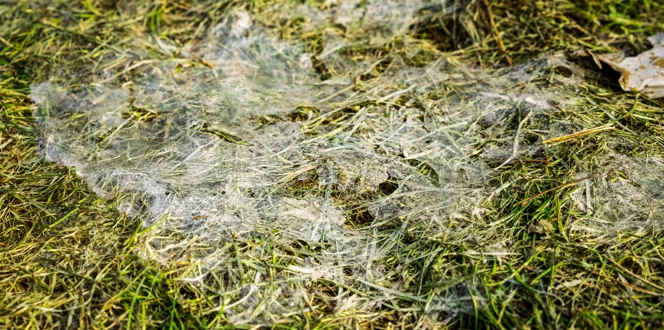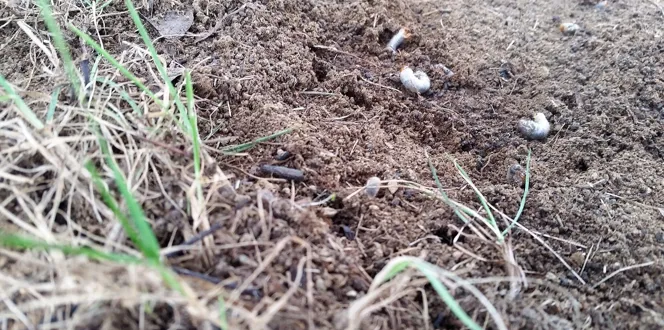All year, we dream of sinking our toes into lush, green grass. It’s nearly as relaxing and rejuvenating as the beach sand!
That’s why it irks us when our lively grass slowly loses its luster and browns.
If you’ve been unhappy with how your lawn looks, let’s solve the problem together. Learn what to do about brown grass in summer – and why this could be happening.
Causes of Brown Spots in Lawn & How to Fix Them
Lack of water + brown grass = drought-stressed lawn
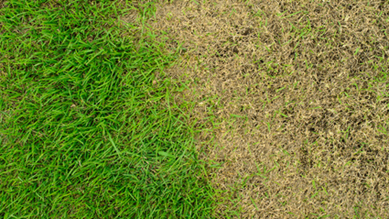
How can I bring back my lawn after drought?
- After 2-3 weeks with no water, most lawns go dormant. Without being watered, lawns can persist in a dormant state for weeks by letting their leaves die back to conserve water for their roots.
- If your lawn is in drought-induced dormancy longer than 4 weeks, it needs water to survive without longer-term damage that may require renovation and reseeding.
- Aerate your lawn this fall. When soil is aerated, grass roots grow deeper and are better able to intake air and water at deeper levels of the soil, which leads to more resilient turf.
Cool temperatures + brown lawn = grass dormancy
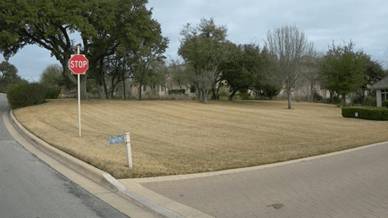
- When does grass go dormant: As summer starts to fade away and temperatures consistently drop below 55°, some lawns enter dormancy. If leaves fall off the trees in your area, your grass will likely go dormant.
- When does dormant grass come back? Inactive, brown grass will become green again in spring. To help your lawn green up faster, fertilize this fall.
Sporadic brown spots in the grass + pets = urine damage
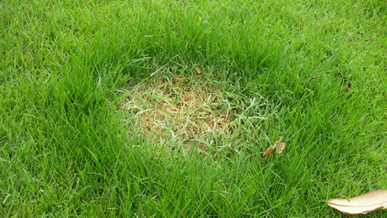
- Why does dog urine damage lawns: If your pet often goes to the bathroom on the same area of the lawn, the high levels of nitrogen and salts burn the grass.
- How to fix brown spots in lawn from dog urine: After your pets tinkle, sprinkle the area with water to dilute the nitrogen.
Sporadic brown spots + digging = grubs
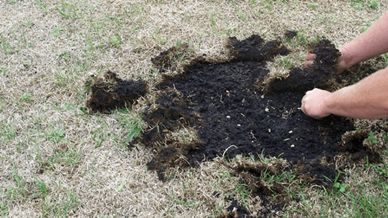
- Signs of grubs: In late summer or early fall, look for brown spots in your lawn that look dug up. You can easily pull back these sections of grass and find grubs. The digging is from birds and other animals looking for grubs.
- What time of year to treat for grubs: Apply grub treatment in summer to get rid of the next generation of adult grubs and their eggs.
Sporadic brown spots that are bare = need to be replaced
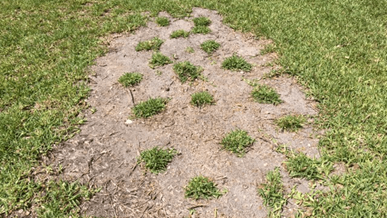
- Causes of bare spots in lawn: Bare spots can be caused by compacted soil, incorrect mowing, lawn scalping or lack of water and sun.
- How to repair bare spots in lawn: This fall, aerate, overseed, and topdress your lawn with compost to make it thick and plush again! If large sections of your lawn are brown and bare, think about silt-seeding.
Need help figuring out why there are brown spots in your lawn and how to fix them? Contact us today.
Topics:


